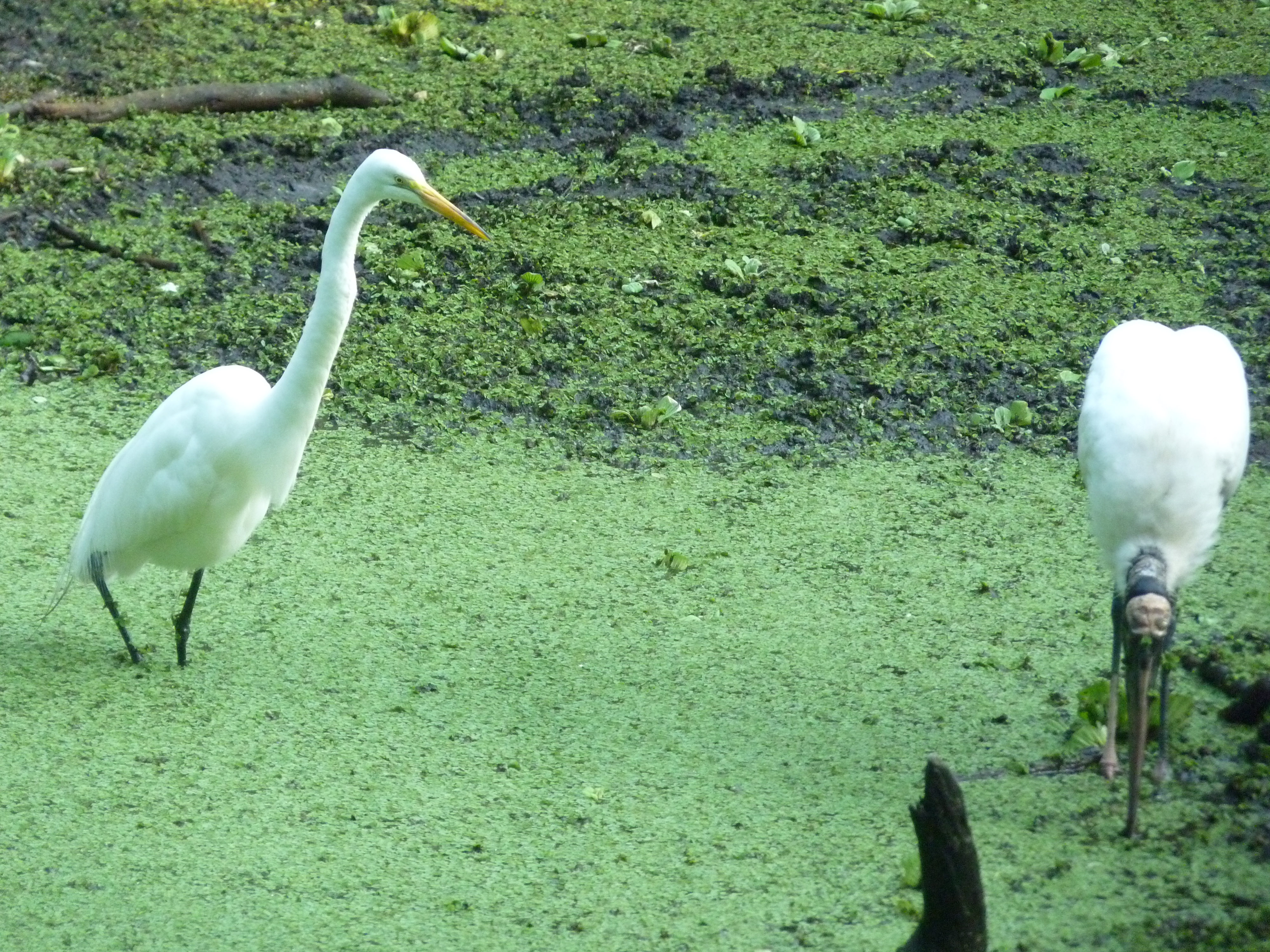I’ve been kayaking in the Everglades multiple times and out walking on just about every nature boardwalk that Southwest Florida has to offer, and every time I venture into the swamp, I fall just a little more in love with it. There’s something about the soggy mix of plants and birds and snakes – the blend of danger and beauty in a place that is so quiet and so loud, all at once, that’s irresistible. I have an upcoming book set in the Everglades, too (science thriller WAKE UP MISSING is scheduled for September 2013 with Walker/Bloomsbury) so on our recent trip to Florida last week, I really wanted to do some hiking deeper in the swamp. I contacted Tod at Tour the Glades, a local guide I’d read about on TripAdvisor, but he was totally booked for the week.
“But what is it that you want to see?” he asked me on the phone. “Orchids?”
“Actually, we’re more interested in looking for panther tracks and just seeing the whole ecosystem,” I told him.
“Oh! In that case, I’ll give you directions to a good trail, and you can just go on your own.” He told me about a trail deep in the Fakahatchee Strand, a state preserved nicknamed “the Amazon of North America”. Just off its only real road, an uneven, dirt and crushed gravel trail called Janes Memorial Scenic Drive, are some old logging trails that hikers use now. “You want to look for Gate 7,” Tod told me. “That trail goes three miles straight into the swamp and then opens up on a huge prairie. You’ll feel like you’re out on the African savannah.”
I could hear in his voice how much he loves this hike. “Thanks,” I told him. “That sounds perfect.”
“You might see panther tracks in the mud and sand off to the side. It’s a great hike either way,” he promised. “You’ll just want to keep an eye out for snakes.”
So early one morning, my son and I set out for the Fakahatchee Strand. Sure enough, we found this gate, and behind it, a shady trail leading into the swamp.
The air was full of birdcalls and the buzzing of mosquitoes and deer flies as we started out on the trail, slightly elevated above the swampy areas on either side. This is one of dozens of old logging trams that were built when the Lee Tidewater Cypress Company began logging this area in 1947. The builders scooped out dirt from either side of the path to raise the ground level enough that they could lay tracks on top of it. The tramways had to be elevated so that cabbagehead locomotives could get through, pulling the trees. The side canals filled in with rainwater and swamp, so what remains is a relatively dry trail with marshy areas on either side. We stayed to the trail, peering into the mud on either side to search for tracks, and listening to the constant rustle of dry palm fronds as critters we could only imagine scuttled deeper into the brush.
There were bugs – oh, were there bugs –not just mosquitoes and deerflies that drew blood, but dazzling giant dragonflies the size of birds, some of them bright scarlet, and butterflies zebra-striped in yellow and black.
We were a couple miles in when we spotted our first snake – a cottonmouth stretched out over the trail.
It was on the small side – about two and a half feet long – and way over on one side of the trail, so we gave it plenty of room and walked on the other side. The snake didn’t move but did treat us to a warning display as we passed.
We marked the path with palm fronts so we’d be extra aware to watch for this snake on our return and continued on our way. Within another mile, the ground beneath our feet softened from packed mud to loose sand, and the thick walls of vegetation opened up onto the wide open expanse called Four Stake Prairie.
I knew even as I took these photos that they wouldn’t do justice to the feeling of endless open space. And they don’t. It was a magical-feeling place, with deer that bounded into the cypress woods as we approached, small islands of scorched palm trees that might have hidden Florida panthers, resting in the shade, and wildflowers that lit the parched land like flames.
Out here, we’d been told to watch for Eastern Diamondback Rattlesnakes, but we didn’t see or hear any. I took some photos and notes for my upcoming book (I’ll be adding more details when I get back to that manuscript…and more bugs!), and then it was time to start back toward the car.
The small cottonmouth was not where we’d left him, so after a careful scan of the trail, I walked past our palm fronds, only to hear my son gasp behind me. The snake was hidden in the grass that separated the two halves of the trail, and I’d walked right past it. It hadn’t moved, but its mouth was open wide. The trail just isn’t that wide, and there wasn’t an easy way for my son to walk around the snake without venturing through thick brush into the marsh, so I found a six-foot long stick and tried to coax the snake off the trail. It wouldn’t leave. It never made a move toward us, but it also never backed down. Finally, I used the stick to slide the snake carefully, all coiled up, way over to the edge of the trail until there was room to pass.
Less than half a mile further along the trail, we met a much larger cottonmouth – maybe four and a half feet long – lounging half in, half out of the brush. It was over to one side, so we slipped quietly past and kept walking.
After our second snake sighting, I came to the conclusion that while I’m truly fascinated by venomous snakes and find them truly beautiful in a scary sort of way, I prefer hiking with a guide when such snakes are likely to be part of the experience. Being the “snake-watcher” on this walk left me with less time and watchful energy to enjoy the other wildlife – the lizards and butterflies and panther tracks that we might have seen in canals I was too wary to explore. As gorgeous as this hike was, my son and I were both ready to see the car at the end of the trail.
This wasn’t the most relaxing hike of my life, but it’s one that I’m so happy to have taken. Amid the carefully landscaped sidewalks and tidy golf course ponds of my parents’ community in Naples, it’s easy to forget what Florida really is. Here, it was easy to remember.












